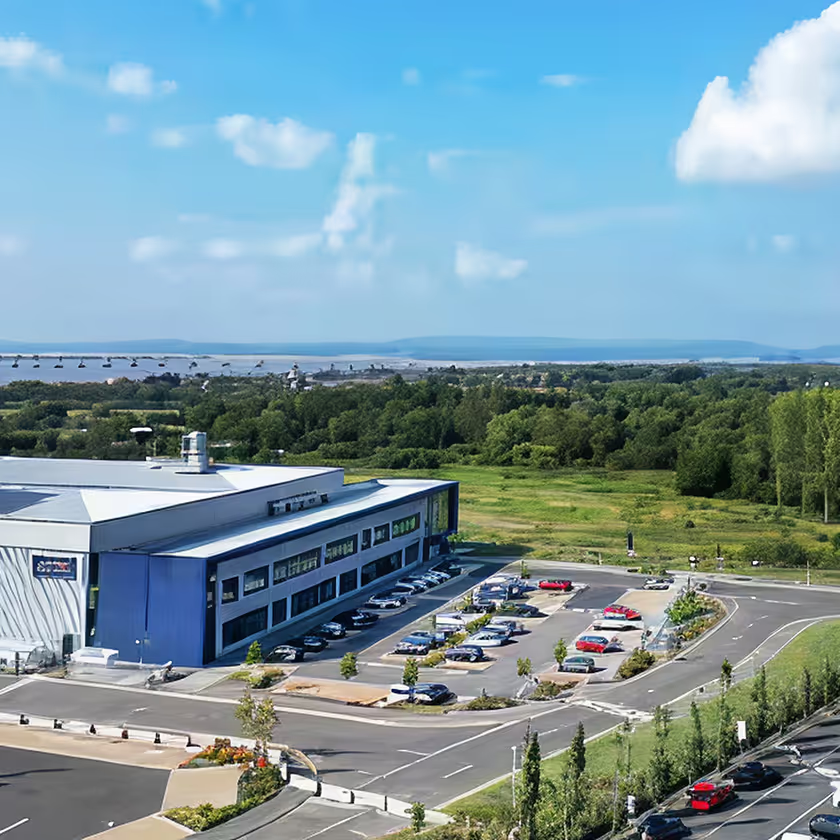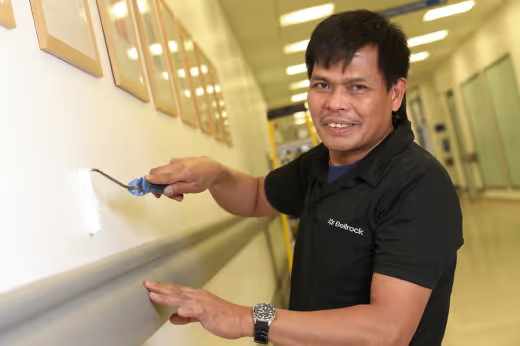Sutton’s Green Enterprise Partnership (GEP)

In London, business rates are typically split between the local council (30%), the Mayor of London (33%), and central government (37%). By enacting Section 69 of the Localism Act 2011, Sutton Council can off er rates relief without needing to compensate the other tax recipients for their loss of income.
Sutton’s model allows the Council to recover the costs of awarding business rates relief and invest this sum in technical assistance to support businesses on their sustainability journey. Participating businesses are charged a partnership fee equivalent to 30% of their business rates liabilities, resulting in a 70% net reduction in their total rates bill. The provision of technical assistance by delivery partner GreenMark is funded from this fee.
The Green Enterprise Partnership supports each business over a two-year period. Below are the requirements for qualifying for rates incentives throughout the two year period.
Year 1 Requirements
- Commit to reducing emissions by 50% by 2030 and achieving net zero before 2050
- Measure and validate baseline emissions
- Develop and validate a Climate Action Plan
- Achieve Green Mark Level 1 accreditation
Year 2 Requirements
- Implement the Climate Action Plan
- Demonstrate a minimum 5% reduction in emissions compared to baseline
- Achieve GreenMark Level 2 accreditation
Headline Figures
- 79% of participants (45 out of 58) achieved Green Mark Level 2 accreditation.
- 98% met or exceeded the minimum 5% carbon reduction threshold.
- Achieved an average emissions reduction of 20% across successful participants.
- Total carbon reduction: 29.7 tCO₂e – equivalent to the annual electricity use of 40 typical UK households or planting approximately 1,350 trees.
- Top 5 actions taken:
- Replaced light fixtures with LED alternatives
- Improved insulation and installed double-glazing
- Increased segregation of commercial waste
- Upgraded inefficient appliances
- Delivered staff engagement and sustainability awareness sessions
Examples:
Croxsons (glass bottle manufacturer, Grove Road)
- Achieved a 30% reduction in carbon emissions.
- Key measures included transitioning to solar energy, upgrading lighting to energy-efficient LED systems, and implementing a temperature-controlled HVAC system with automated timers.
Sutton United Football Club
- Reduced carbon emissions by 0.93 tCOe, achieving a 5.33% reduction.
- Actions included switching half of their heating to low-carbon electric heat pumps, replacing boilers, upgrading showers to energy-efficient models, launching an energy efficiency campaign, and securing a new green electricity tariff from January 2024.
Comparative Context and Impact
- The scheme has achieved a notably high success rate, defined as the percentage of participating businesses that have met the scheme’s objectives. This performance is unprecedented in comparison to other green business initiatives across London.
- A major achievement of Sutton’s scheme is its ability to measure and validate both baseline and reduction data. While this standard is typical in supply chain greening initiatives, it is uncommon in publicly led programmes. To our knowledge, no other public-sector-led scheme has delivered verified emissions data with this level of rigour—most rely on self-reported figures or anecdotal evidence to demonstrate impact.
- The verified reduction of nearly 30 tCO₂e in Scope 1 and 2 emissions in one year highlights the significant role the non-domestic sector can play in tackling borough-wide emissions. This figure represents just 20% of the total emissions reported by 45 participating businesses and is equivalent to the annual electricity consumption of approximately 40 typical UK households.
- Sutton’s online delivery model is also highly cost-effective. It focuses on capacity building rather than traditional premises audits, encouraging businesses to develop solutions tailored to their own operations. This approach equips businesses with the skills and tools to continue their sustainability journey beyond the period of direct support, fostering lasting behavioural change.
- By aligning climate goals with financial incentives, the scheme successfully engages businesses that are not typically involved in sustainability initiatives - those that may not have previously prioritised environmental concerns due to lack of resources, awareness, or competing priorities. This approach broadens participation beyond the usual suspects, bringing more diverse sectors and smaller enterprises into the transition to a greener economy.
- Sutton Council also achieved an unprecedented scale for a borough-led initiative. In the past year alone, we supported 128 businesses — around 5% of all rateable properties in the borough — with 90 businesses meeting the scheme’s requirements and receiving business rates reliefs. Today, it is believed that Sutton's Green Enterprise Partnership is the largest publicly led green business technical assistance programme in London. This illustrates the ambition and reach of Sutton’s approach.
The foundations for sustainability
GreenMark helps you reduce your environmental impact with a clear, web-based certification process.






























